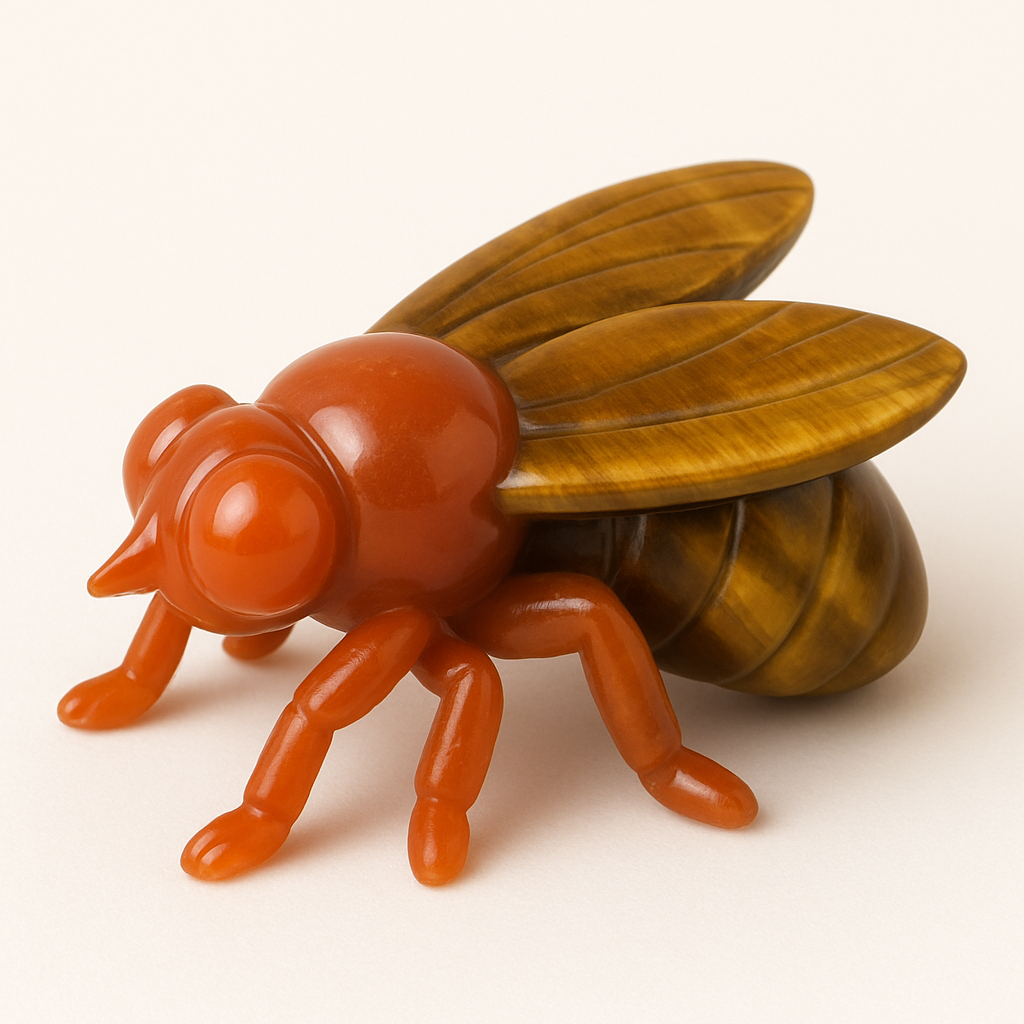
The Symbolism of Flies
Share
Restless, persistent, and impossible to ignore, the fly is a being of ceaseless movement—drawn to decay, yet alive with vital energy. It exists where others turn away, appearing as a messenger from the margins of perception. The fly is an emblem of unresolved attention, the catalytic presence of that which must be addressed, and the energetic principle of confrontation through irritation. It is not malicious, but disruptive in service of awakening.
To contemplate the fly is to encounter the archetype of necessary disturbance, of the uninvited teacher, and of the small voice that demands awareness through discomfort.
The Interrupter in Cultural Memory
In ancient Egyptian cosmology, flies were awarded as medals of valor to soldiers—symbols of persistence, courage, and unwavering effort, despite their connection to rot and death. This paradox reflects the fly’s dual nature: reviled yet resilient, dirty yet devoted, a creature that survives in all conditions and brings the message that life continues even through decay.
In Greco-Roman mythology, flies are linked with plagues and divine correction, sent by the gods to draw attention to imbalance, corruption, or ignored truths. Their presence was not random—it was a summons to cleanse, to face what festers, and to restore harmony where it had been lost.
In many folk traditions, the fly is an omen of unfinished business, of spirits lingering, or tasks uncompleted. It hovers, returns, presses—until the thing left unspoken is finally addressed.
In all symbolic traditions, the fly disturbs not as punishment, but as call to inner housekeeping.
Buzz, Breach, and the Demand for Attention
The fly does not stay still. It moves in bursts—erratic, insistent, always returning to what one tried to ignore. It is not large, yet it captures awareness. It is not beautiful, yet it cannot be unseen. The fly teaches that what is avoided becomes louder, that small disturbances often point to deeper misalignments, and that what the mind pushes away, the spirit invites in for healing.
It feeds on decay—not in celebration, but in natural service to transformation. It reminds that even what has rotted can feed life, and that nothing is wasted when seen through the lens of the whole.
The fly does not wait for welcome. It enters where energy is stagnant. It teaches that some truths do not arrive gently—they arrive buzzing.
Resonance with the Energy Centers
The fly resonates primarily with the orange-ray energy center—the sacral chakra, which governs polarity, emotional triggers, and relationships built through tension and contrast.
Its presence stirs emotional reaction—annoyance, discomfort, agitation. This is orange-ray in catalytic form: emotion called forth not for pleasure, but for processing. The fly reveals that the emotional field cannot be cleansed through suppression. It must be faced, felt, and integrated.
There is also a secondary resonance with the yellow-ray energy center—the solar plexus chakra, which governs identity, self-responsibility, and one’s energetic relationship to control and reaction.
The fly’s persistence can mirror unresolved yellow-ray distortion—control patterns, irritability, resistance to perceived disorder. But it also invites the self to examine: Why does this disturb me? In doing so, it becomes a tool for reclaiming personal clarity amidst external disruption.
Together, orange and yellow stir through the fly as:
trigger as teacher,
irritation as invitation,
and the return of what was left unfinished.
The One Who Returns Until Seen
To walk with the fly is to allow the self to face what is buried, dismissed, or avoided, and to understand that disturbance is often a form of sacred notice. The fly teaches that truth does not always arrive peacefully, and that awakening sometimes begins with what cannot be ignored.
The fly does not flatter.
It provokes.
It does not flee when swatted.
It returns.
It teaches:
Look closer.
Clean what has been neglected.
And remember—even decay feeds rebirth.